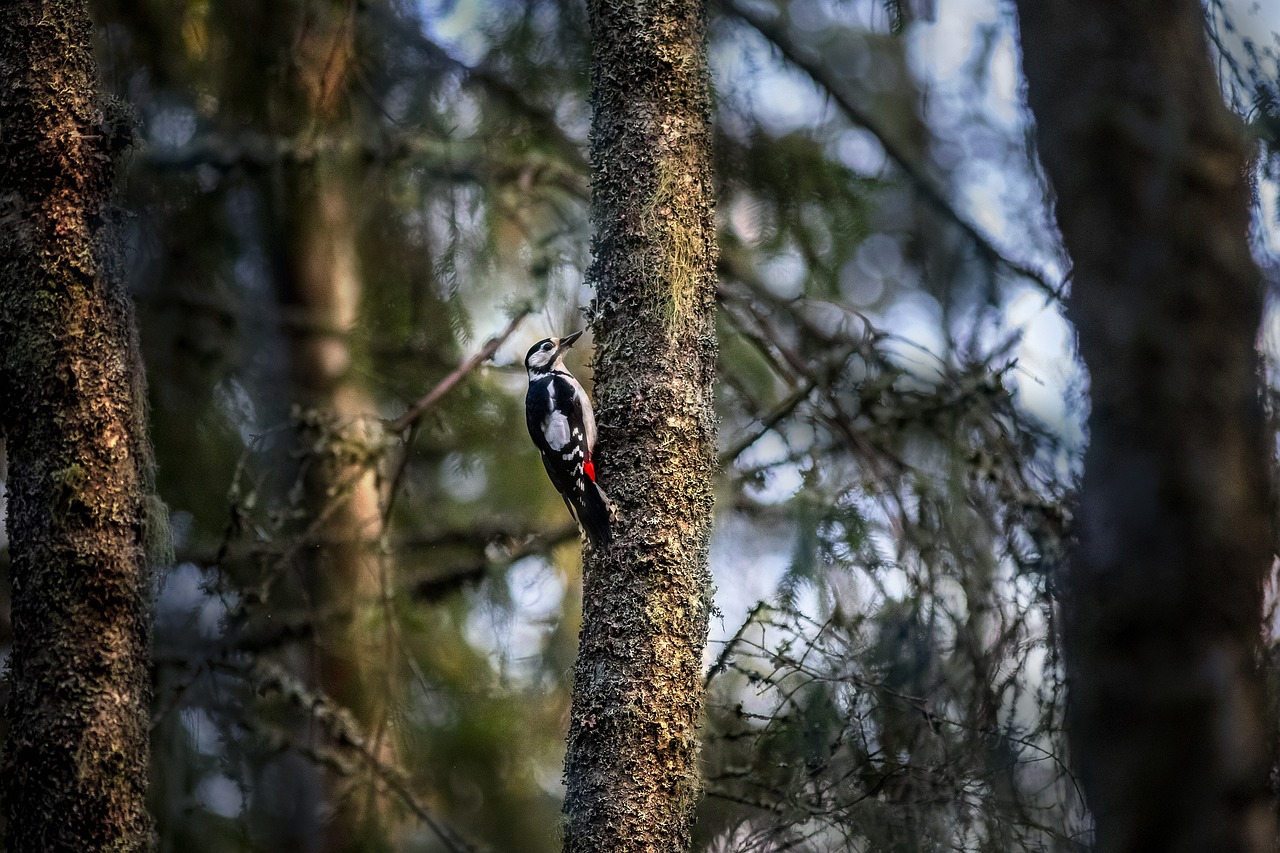📌 Overview
The Great Spotted Woodpecker is a medium-sized woodpecker found across Europe and parts of Asia. It is well-known for its distinctive black and white plumage, loud drumming on trees, and characteristic undulating flight. It is one of the most commonly seen woodpeckers in its range.
🔍 Identification
- Size: About 23–26 cm long (9–10 in), wingspan 38–44 cm.
- Weight: 70–100 g.
- Plumage:
- Black and white back, wings, and tail.
- White underparts.
- Red vent (under the tail).
- Males have a red patch on the back of the head.
- Juveniles often have a red crown.
🌍 Distribution & Habitat
- Range: Widely distributed across Europe and northern Asia. Absent from Ireland, parts of southern Spain, and extreme northern Scandinavia.
- Habitat: Prefers deciduous and mixed forests, parks, orchards, and gardens with mature trees.
🍽️ Diet
- Omnivorous:
- Insects and larvae (especially beetles).
- Seeds and nuts (particularly in winter).
- Tree sap and berries.
- Occasionally takes eggs and nestlings of other birds.
🪺 Breeding
- Breeding Season: April to June.
- Nest: Excavated in dead or decaying trees.
- Clutch: 4–7 eggs.
- Incubation: About 10–13 days.
- Fledging: Chicks leave the nest after 3 weeks.
🗣️ Calls and Drumming
- Call: Sharp “kick” or “chip” sound.
- Drumming: Rapid pecking on wood used to establish territory and attract mates, especially in spring.
📊 Conservation Status
- IUCN Red List: Least Concern.
- Population Trend: Increasing in many areas due to reforestation and adaptation to parks and gardens.
🧠 Interesting Facts
- The Great Spotted Woodpecker has a specially adapted skull that protects its brain from repeated impacts during drumming.
- It can extract insects from under bark using its long, sticky tongue.
- Plays an important ecological role by creating nest holes that other species use later.
Visited 904 times, 2 visit(s) today
Views: 1459
Subscribe to the newsletter:
